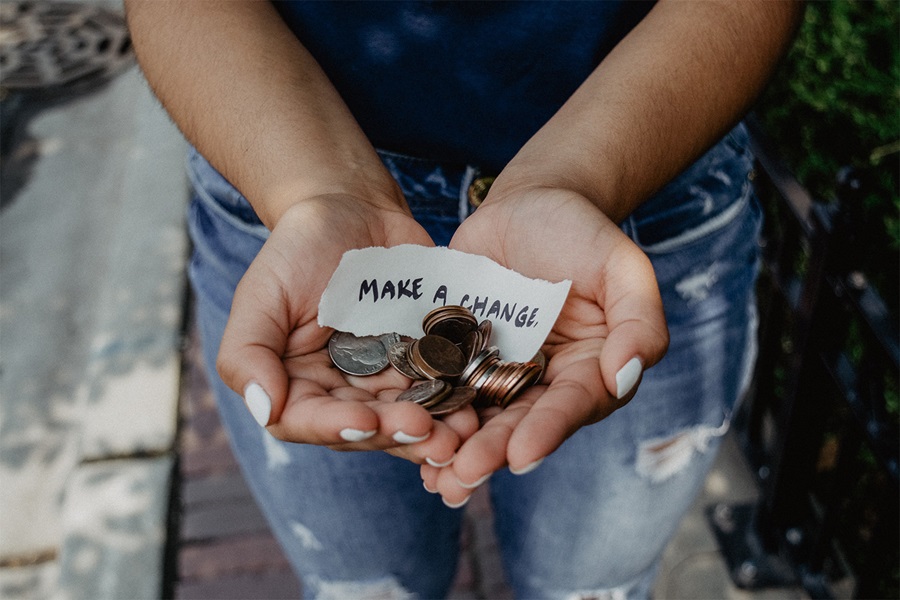Let’s start with a simple truth: the effects of human activity on the environment are already visible all over the world. In Canada, for example, we are experiencing larger and more frequent floods and forest fires; ice in the north is melting at a greater rate; and lands are being given up to development. And while much is being done in the interest of keeping our economy strong, 90 percent of Canadians believe that global climate change is a threat. This makes many of us want to shop in an eco-friendlier manner, with three-quarters of us believing it is important to buy ethically produced goods. Centennials and millennials are even more inclined to shop at retailers and buy from brands that reflect their values.
Tearing down barriers, building up opportunities
Many Canadians want to be respectful and mindful of our society and the environment but that has not yet translated into market behaviors. This Value Action Gap (VAG) is due to an array of market barriers with the price of sustainable products at the top. Consumers are also struggling with a lack of trust; know-how; convenience; and support from businesses, government, and charities. Brands have an opportunity to break down these barriers by pioneering authentically sustainable practices that help instill trust. By increasing convenience and affordability, they can help consumers feel like they are contributing to society and the environment by making sustainable choices.
An alignment of ethical and financial cases
The serendipity of the current climate is that brands don’t have to choose between ethics and financial growth. Companies that manage their environmental and social impact are more profitable in the medium to long term as demand for sustainably marketed products is growing. In addition, brands with a strong corporate reputation grow their brand value at a faster rate, not least because it makes a significant contribution to their brand equity. According to BrandZ™ data, corporate social responsibility (CSR) increases brand equity, with environmental responsibility being its most important component. In addition, sustainability can optimize a brand’s bottom line by cutting waste from development, manufacturing, and distribution processes.
The pandemic revealed the necessity for sustainable operations
In times of crisis, it is tempting to focus on short-term results; however, that risks pushing the broader sustainability agenda to the sidelines. The global pandemic of 2020 has provided an indication of what a climate crisis could entail: price wars, panic buying, reduced consumer spending, and disruptions in supply chains. Forward-looking brands have the opportunity to protect their businesses both from an operational and brand equity standpoint. BrandZ™ data shows us that brands with strong equity can weather crises better and return to growth faster.
Building a roadmap to profitable sustainability
For all of these reasons, brands need a roadmap to sustainability that is profitable and builds long term brand value. Here are some steps to success:
Develop a strong and authentic point of view on sustainability.
First, understand how your brand can have the greatest impact. Then, educate consumers on how much of a difference your actions are making. Be transparent and authentic, which is what consumers want. If your brand appears to be acting differently from its messaging or is perceived to be doing the bare minimum, it may pay off in the short term. However, as consumers become wise to your ways, your brand will be accused of greenwashing.
Develop strategic partnerships to tackle sustainability issues together.
It may seem counterintuitive to work with your competitors, but it can lead to greater change. In fact, half of Canadians think that these kinds of partnerships would increase the chances of success and make them think more highly of brands.
Help consumers feel they are making a difference.
Be a voice that educates consumers and makes it easier for them to contribute through interactions with your brand. Loop by TerraCycle is a good example of making a zero-waste lifestyle convenient. It provides consumers with package-free delivery for familiar household brands and products from companies like P&G and Unilever.
Make it affordable.
Consider ways to optimize processes to deliver a sustainable product or experience in a way that offers value for money.
Get techy with it.
Technological advances offer opportunities to re-evaluate large scale systems and structures and make them more sustainable and efficient. This can lead the way to creating real, positive change for the future by providing consumers with the accessible and affordable options for sustainability that they want.
The responsibility to drive greater long-term sustainability cannot rest squarely on consumers’ shoulders; it takes a partnership between businesses, government, and consumers. Brands that really understand how they can have the greatest impact, even if that means collaborating with competitors, can then truly meet consumer needs, strengthen their equity, and increase their profits — all while driving positive change within their communities and the environment.

